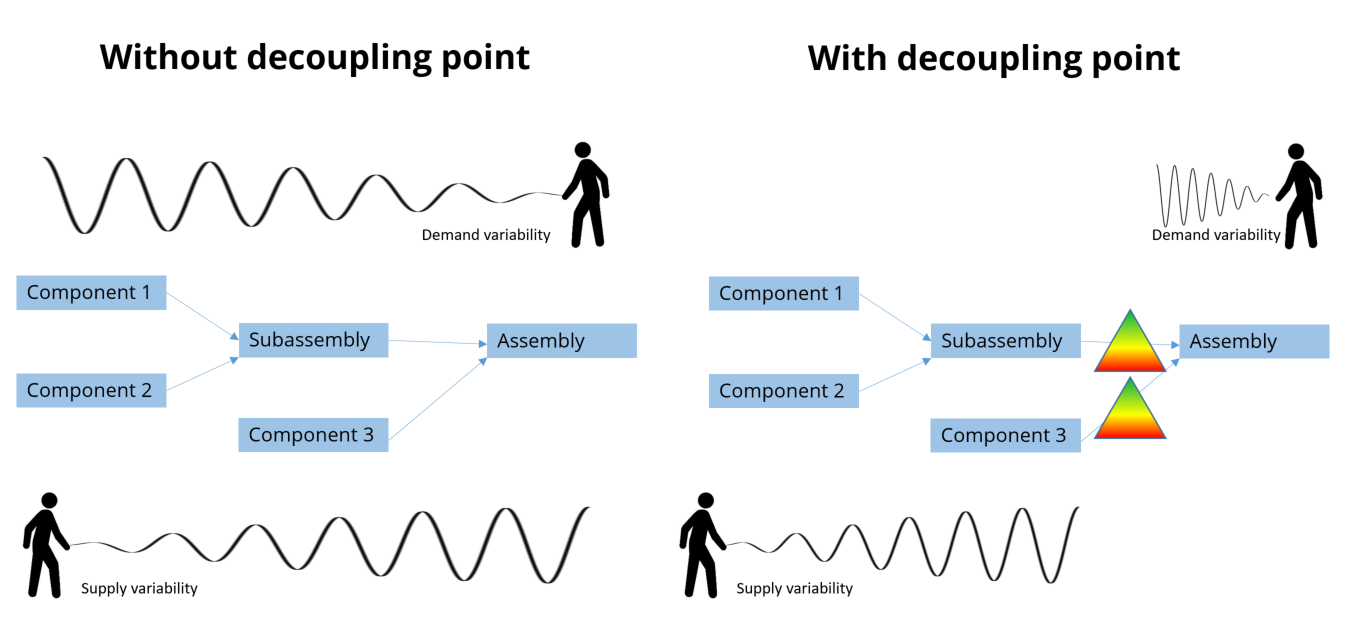Decoupling points
in a supply chain
Any supply chain or manufacturing process needs decoupling points where inventory is kept.
This inventory serves 2 purposes:
- Inventory dampens supply and demand variability.
- Inventory divides the total lead time.

The inventory dampens variability
Things don’t always go as planned, both on the supply and the demand sides. Inventory at the decoupling points creates a safety buffer to cover unexpected situations (delay in a supplier delivery, sales order due date or quantity updated by customer…).
Without the inventory at the decoupling points, a disturbance on the supplier side can have an amplified impact on customer demand.
Similarly, a change on customer demand can cause an amplified change in the raw material requirements for suppliers.
This is known as the bullwhip effect.
The inventory divides the total lead time
You can serve finished products to customers without waiting for the purchasing lead time of some components or raw materials.
Each section of the supply chain is protected by the inventories and can be planned with its own decoupled lead time.
Planning at the decoupling points
At the decoupling points, your planners need to make important decisions on how much inventory to carry. A higher inventory level increases the dampening and decoupling effects but obviously brings additional costs.
FrePPLe’s inventory planning module supports your planners in this process:
- For each decoupling point, frePPLe computes a safety stock and a reorder quantity. The system will propose a safety stock based on the desired service level. Planners can then override this by providing upper and lower bounds in units or days of cover. They can edit the inventory policy parameters for individual item-location combinations. They can also manage these combinations at aggregate levels by defining segments and business rules.
- An intuitive color code is assigned to monitor the inventory status. In the green zone, the inventory level is in a healthy state. When the inventory status falls into the orange zone, it is time to launch a replenishment order. When the inventory status drops into the red zone, a significant stockout risk exists, which means replenishments may need expediting.
- A widget in frePPLe is dedicated to the buffer inventory. Calculated safety stock, reorder quantity and expected on hand after one lead time are displayed and allow planners to have a quick overview at the current and to-be situation.
These planning principles are aligned with the emerging DDMRP / demand driven MRP concepts.
You can test them on frePPLe now in our live demo environment or try for free.

